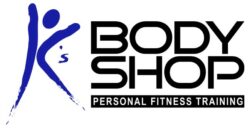Now that the relentless sub-zero temperatures of the past few months seem to have been replaced with a few sunny days in the mid-40’s, Twin Cities runners are coming out of hibernation and hitting the local running trails with a vengeance! It’s been a long winter and everyone (myself included) is ready for spring! Hopefully, you’ve been keeping up with some indoor mileage or other cross training activity over the winter, including strength training – and you’ll be able to integrate outdoor runs and increased mileage with no problem. On the other hand, if you’ve spent the last few months surfing the sofa, be patient and resist the temptation to suddenly increase your running miles so that you can avoid the expense and suffering brought on by an overuse injury. Those who sit a lot tend to have the most common muscle imbalances in runners (especially in the hips) and are more likely to suffer overuse injuries such as patellofemoral pain, patellar tendinitis, Achilles tendinitis, IT Band syndrome, and plantar fasciitis. So, the part of your body that hurts is usually not the problem – it’s merely a symptom of a problem. The root cause of many running injuries is frequently muscle imbalances in the hips, which can lead to overpronation of the entire leg and joint dysfunctions at the hip, knee and ankle as well as the maladies that result.
Here is a short video demonstrating 3 simple body weight exercises that can help you correct some of the most common muscle imbalances in runners that I see in my practice. These exercises are not all inclusive and most likely won’t completely solve anyone’s problem by themselves, but it will get you started.
Remember, these exercises will help you activate and strengthen muscles in the hips that are commonly weak, especially in people who sit for extended periods of time. They can all be progressed as needed so that you can continue to improve, BUT you still need to integrate and re-train the weak and inhibited muscles so that they come to the party when you’re actually running! If you’d like to know the best corrective exercise training regimen for you, contact me for an assessment and we’ll figure it out instead of you just guessing.
Happy trails!
